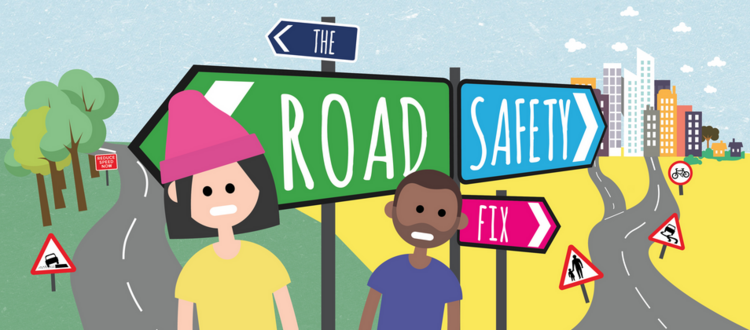
YOURS participates in the High Level Consultative Committee: Sweden 2020
Sweden is to host the 3rd Global Ministerial Conference on Road Safety on 19–20 February 2020. The conference will be co-sponsored by the World Health Organization (WHO), and minister-led delegations from more than 100 countries are expected to attend. Representatives from the world of industry and research, international institutions and other global organizations will also participate.
The conference marks the end of the UN Decade of Action for Road Safety 2011–2020 and the starting point for continued collaboration on road safety. The aim is to reach global consensus on guidelines for continued international collaboration on road safety up to 2030.
As part of the preparation for this landmark meeting in 2020, the Government of Sweden in collaboration with the World Health Organization undertook a meeting with a high-level consultative committee. YOURS was invited to be part of the committee to bring the voice of youth in road safety to the table and speak about our plans for a 2nd World Youth Assembly for Road Safety.

Members of the High-Level Consultative Committee for Sweden 2020
The meeting focused on a number of areas including an overview of the Decade of Action for Road Safety which comes to its conclusion in 2020 and the steps ahead; objectives of the 3rd Ministerial Conference, the role of road safety stakeholders ad well as a discussion on pre and post events.

Our Executive Director, Floor Lieshout presented the idea of a 2nd World Youth Assembly for Road Safety to take place as a pre-event to the conference. The Assembly has the vision:
For young delegates to be empowered with road safety knowledge, skills and resources and to have direct access to their leaders in order to work together as equals on building a safe mobility system.
Overall, the idea for the Youth Assembly was well received and we are now working hard to make it a reality in Sweden.
 YOURS is a direct follow-up of the United Nations World Youth Assembly for Road Safety in 2007. More than 400 young people from over 100 countries gathered to discuss the global road safety crisis and how young people can be part of the solution. One of the main wishes of the World Youth Ambassadors was the creation of a global youth-led organization that would lead a global youth movement for road safety. After a full year of planning and preparations under the auspices of the World Health Organization, YOURS was officially launched November 2009 during the opening ceremony of the First Global Ministerial Conference on Road Safety in Moscow, Russia.
YOURS is a direct follow-up of the United Nations World Youth Assembly for Road Safety in 2007. More than 400 young people from over 100 countries gathered to discuss the global road safety crisis and how young people can be part of the solution. One of the main wishes of the World Youth Ambassadors was the creation of a global youth-led organization that would lead a global youth movement for road safety. After a full year of planning and preparations under the auspices of the World Health Organization, YOURS was officially launched November 2009 during the opening ceremony of the First Global Ministerial Conference on Road Safety in Moscow, Russia.



 There is an overly increasing trend of animals killed on our roads. It doesn’t require you to have 3 PhDs to make this subtle observation. In what should be an outrage (or am I being radical real here), we neither know how many of these poor animals get killed annually nor do we know why and when they are killed. I have no bragging rights to claim (yet) to be an animal rights activist, but rightly so, every human should be concerned by the wellbeing of all animals since we all belong to the same Kingdom.
There is an overly increasing trend of animals killed on our roads. It doesn’t require you to have 3 PhDs to make this subtle observation. In what should be an outrage (or am I being radical real here), we neither know how many of these poor animals get killed annually nor do we know why and when they are killed. I have no bragging rights to claim (yet) to be an animal rights activist, but rightly so, every human should be concerned by the wellbeing of all animals since we all belong to the same Kingdom.





